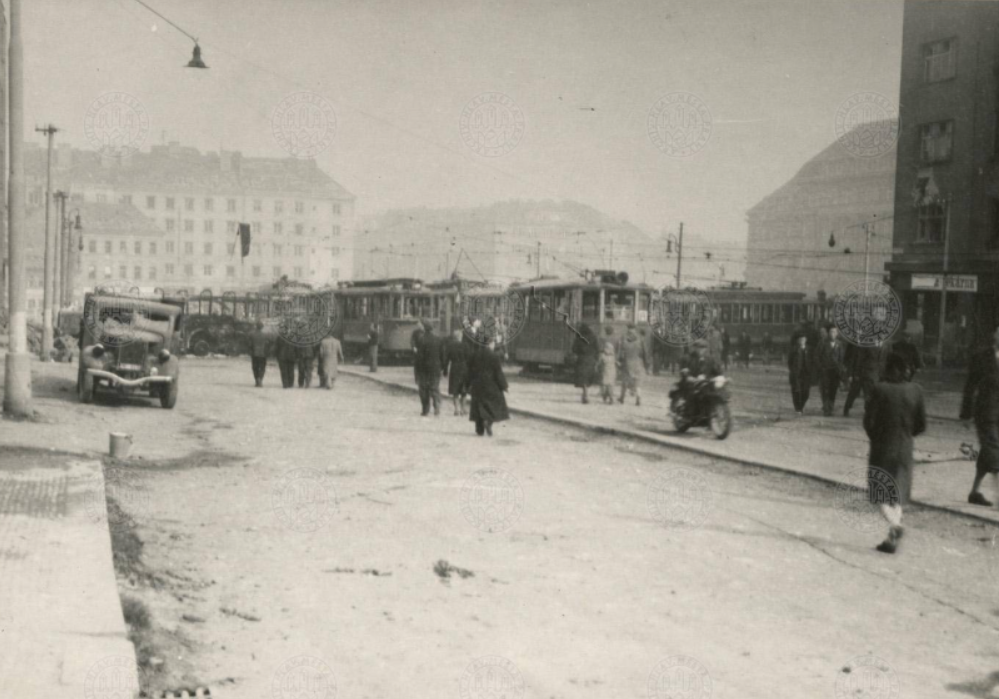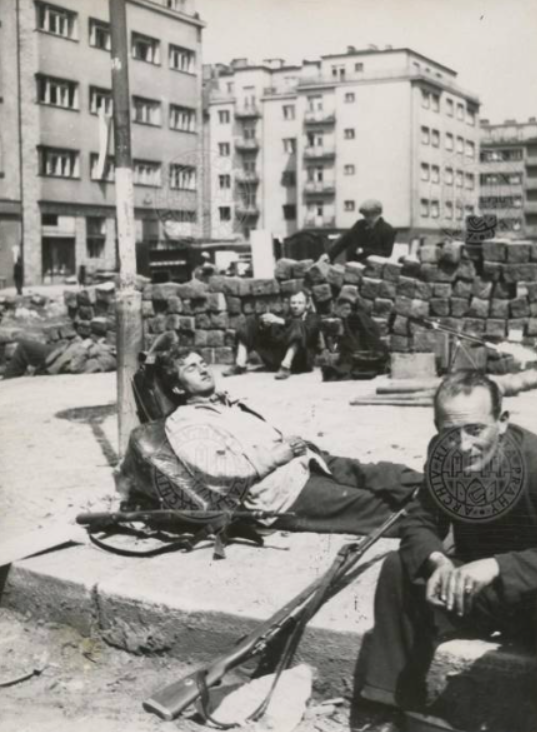- Crossroads between Petra Rezka and Táborská streets
The bloodiest battle
During the five days of the Prague Uprising, Prague became the scene of various events that culminated with the surrender of Germany, the disarming of SS members, and the dismantling of the occupation administration in the Protectorate of Bohemia and Moravia. The heavy clashes between the insurgents and the SS, among other places, in Pankrác and Nusle, are significant.
In Pankrác, Praguers began to disarm the Germans and occupy strategic buildings but encountered resistance from the SS guard battalion overseeing the ammunition storage in Na Zelené lišce School. Few of the insurgents expected the Nazis to have the strength to resist and possibly reconquest Prague. However, the Benešov division of SS Wallenstein was present at the scene, like in many other locations in the city, from the early morning of 6 May. It, however, faced a well-organised defence by the insurgents led by former legionaries. The Nazis compensated for their failure by brutally massacring the civilian population. (Úsobská street, Na zelené lišce school)
The decisive attack of the SS Wallenstein division began on 7 May, at four o’clock. Three hours later, it overcame the barricades before Soudní (Court) Square and continued along Táborská Street, where it faced a counterattack from the insurgents and two Russian Liberation Army troops. The German troops then reached the Prague centre from the north and east; however, the Wallenstein’s division attack failed at the border of Leflova (currently Petra Rezka) Street, Palackého (currently Táborská) Street, and Soudní (Court) Square (currently Hrdinů/Hero Square).

A barricade on Soudní (Court) Square in Nusle, near the junction of Petra Rezka Street and Táborská Street, 7 May 1945. Prague City Archives, unknown photographer.

A barricade in Nusle, capturing the insurgents at rest; photo date 9 May 1945. Prague City Archives, unknown photographer.



